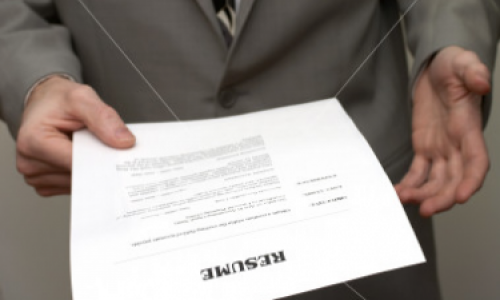This article has been adapted from a 2013 Career Services handout.
Resumes are tough, they’re one of the first things an employer sees from you, and they need to represent your skills and abilities. They need to be meticulously edited, yet there’s a good chance an employer will only scan it for a few seconds.
That’s why we’ve put together eight tips to help you create a resume that presents the best of you and helps you land that coveted job.
1. Make your resume visually appealing
No matter how basic your computer skills, you should be able to put together a properly formatted and visually appealing resume. While using a template usually isn’t a good idea, you can start with one as your base, editing colours, fonts, and sections to fit your needs and personality, just make sure in the end you’re consistent with fonts, punctuation, style etc.
2. Make sure your resume is easy to read
Don’t go crazy with that formatting we talked about. If an employer can’t easily skim your resume they won’t waste their time on it. Don’t choose an unreadable font, one that’s too small, or shrink your line spacing too far. Bullets are your friends here. They help communicate information easily and make a page look much less crowded.
3. Be strategic with your ordering
Organize your experience and qualifications into sections, and place them in descending order. If your most relevant experience isn’t the most current then consider using targeted headlines to switch up the typical chronological order. For example “Marketing Experience” or “Accounting Experience”
4. Ask “What” and “So What” when writing bullets
Develop impactful bullet points by constructing sentences that explain:
-
The task you completed (the "what").
-
How this had a positive impact on the team/organization (the “so what?”).
5. Be specific
Use action verbs and specific examples with quantifiable information. This makes your points much more concrete, convincing, and compelling.
6. Step back and edit
Look over your resume as a whole, does the flow make sense? Have you included all the relevant information? Is it too long or too short? Are there any words or phrases you overuse? Is the formatting consistent and easy to follow? Does your resume present the best version of yourself? Sometimes it can be helpful to step away for a while and return with fresh eyes.
7. Consider the employers perspective
Read through your resume again, but with the employer in mind this time. Would you hire yourself for the position? Consult the job description and ensure you address all the requirements you can.
8. Proofread
Yes, this requires a second tip. Now that your content and formatting are down, go through your resume line by line to ensure there’s no spelling or grammatical errors. Remember, spellcheck can’t catch everything.
Now get out there and start applying for some great jobs with your newly improved resume.














